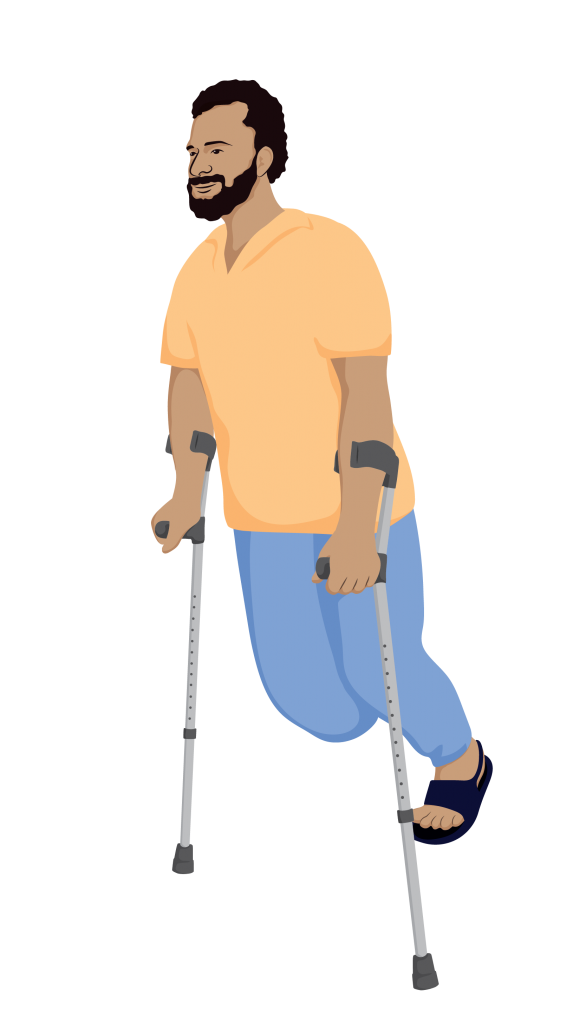Selecting the right walking aid also depends on the person’s abilities and activity levels.
In this topic we will look at weight bearing, strength, coordination, balance, thinking skills and activity level.
 Weight bearing
Weight bearing
If a person cannot put weight equally through both legs, find out how much weight they can put through each leg.
This information will help you decide how a walking aid can be used and which walking aid is suitable.
Question
Tip – click on the question to view feedback
Rollators, posterior walkers and walking sticks are not suitable for a person who can weight bear through only one leg.

Hand strength
Some walking aids always need two hands to use them. This includes:
- Walking frames
- Rollators
- Posterior walkers
Strong hands are needed to use brakes on rollators.
Cali cannot use a rollator because she does not have enough strength in her hands to work the brakes.
Upper body and arm strength
Crutches, walking sticks and walking frames need more upper body strength than rollators to use. Axilla crutches provide more support than elbow crutches.
Question
Tip – click on the question to view feedback
Walking frames need to be lifted to walk. The person needs to be strong enough to do this.
Coordination
Good coordination is needed to use crutches and posterior walkers, compared to other walking aids.
Question
Tip – click on the question to view feedback
Some health problems that affect coordination include stroke, brain injury and cerebral palsy.
Balance
If a person has poor balance, they are likely to need a walking aid that is stable and provides good support.
The mobility assessment (later in this lesson) will help you and the person identify how much support is needed.
Question
Consider the following statements relating to the support provided by the walking aids.
Tip – click on the True or False tabs for each question to view related feedback
Falls
A walking aid may increase the risk of falling if it is used incorrectly.
If someone is at risk of falling, they may need more training and supervision to use the walking aid safely.
Thinking skills and memory
Good memory and being able to understand instructions is important to learn how to use walking aids correctly.
If a person has difficulty thinking and remembering, include family members in training and take more time. Assistance may be needed for the person when using their walking aid.
Activity level
If a person can only walk a short distance it is likely they will need a walking frame or rollator. These walking aids provide more support.
Someone who can walk longer distances has a higher activity level. They are likely to need a walking aid that provides less support such as a walking stick or crutches.